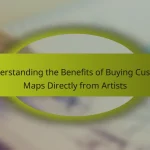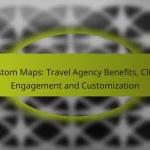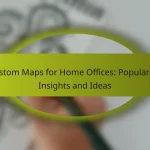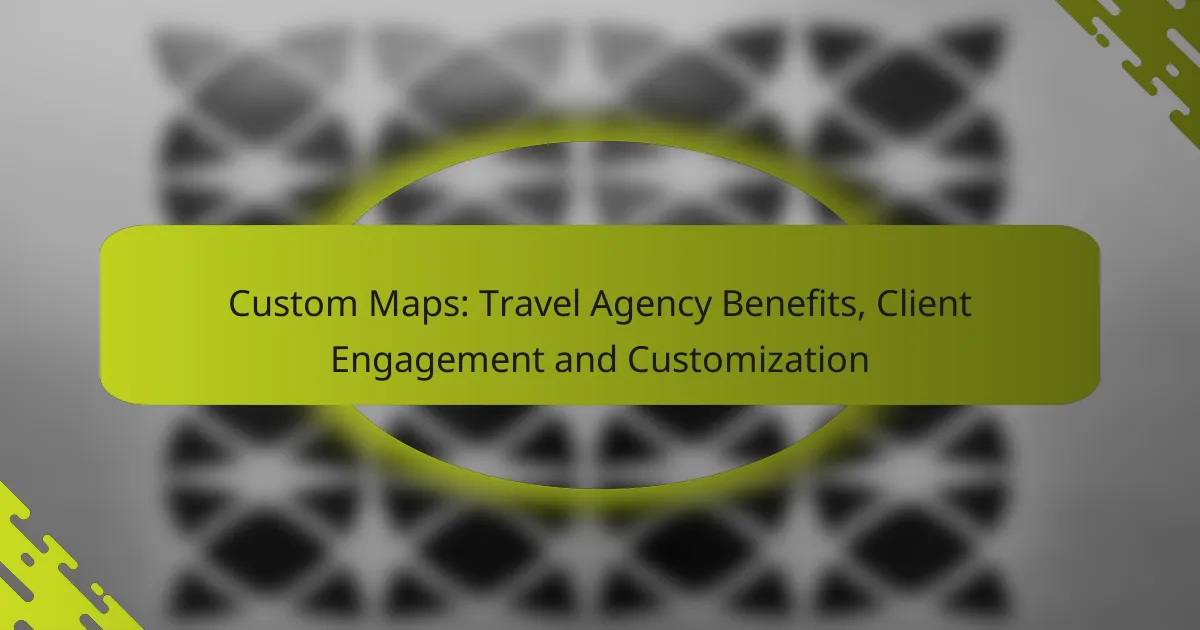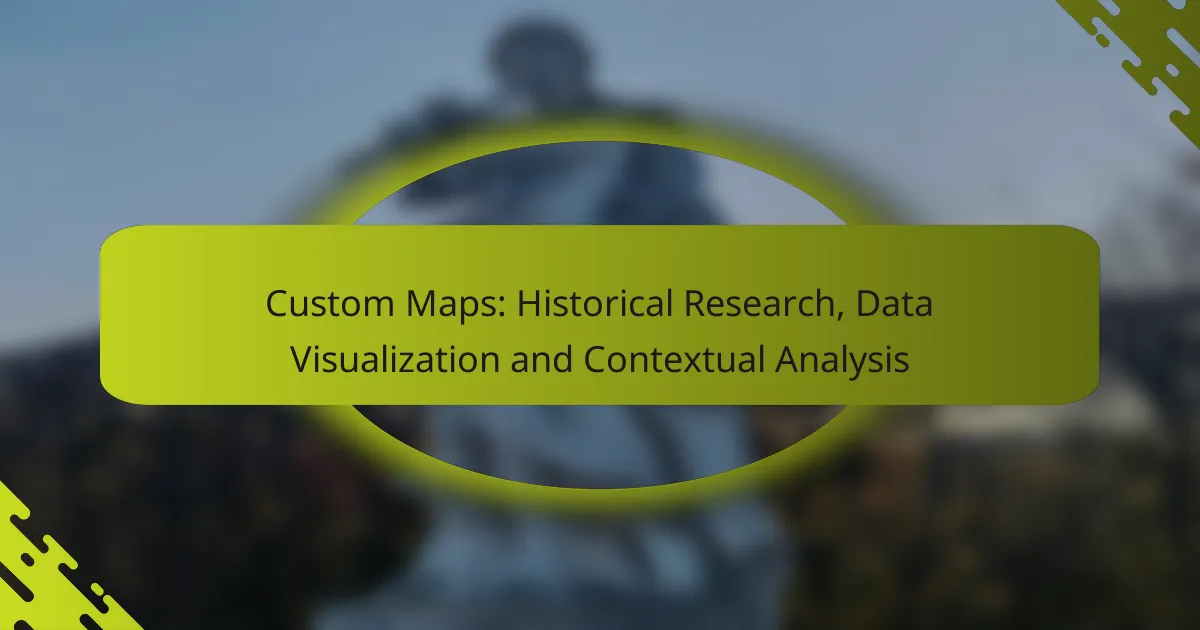Custom maps are powerful tools that can elevate marketing strategies by engaging customers with unique visual representations of brand messages. They not only showcase locations and services but also enhance a company’s identity and foster customer loyalty, making them invaluable for businesses that prioritize location-based engagement.
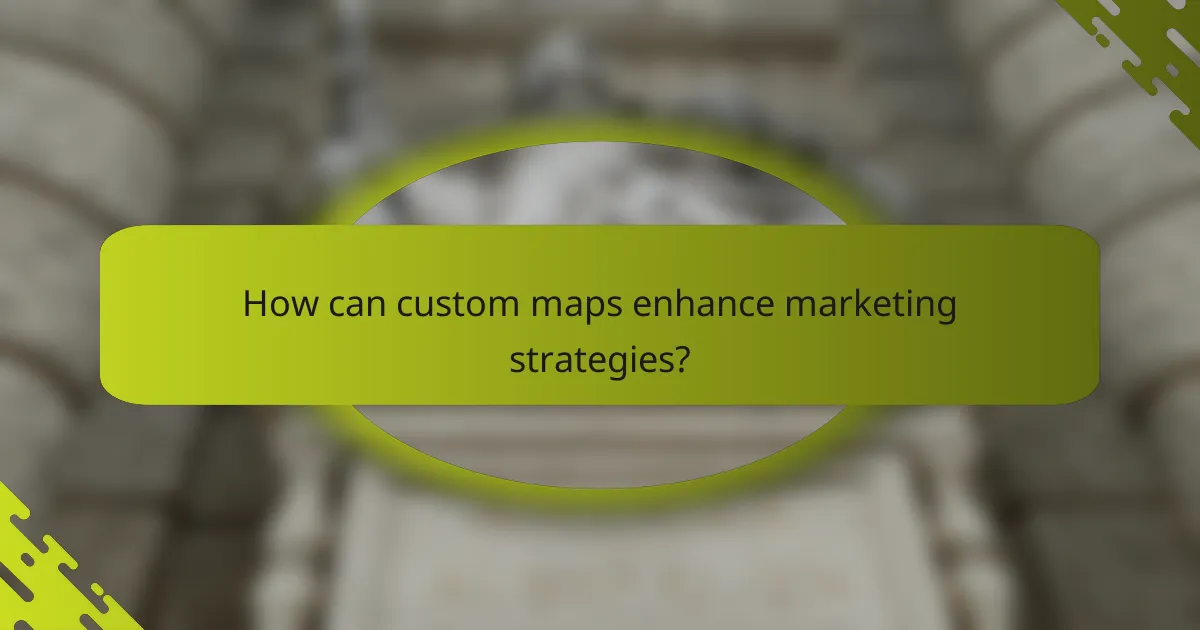
How can custom maps enhance marketing strategies?
Custom maps can significantly enhance marketing strategies by providing unique visual tools that engage customers and convey brand messages effectively. They allow businesses to showcase locations, highlight services, and create memorable experiences that resonate with target audiences.
Improved customer engagement
Custom maps foster improved customer engagement by offering interactive experiences that draw users in. For instance, a restaurant could create a map highlighting local attractions, encouraging visitors to explore the area while promoting their services. This interactive element keeps customers on the website longer, increasing the likelihood of conversion.
Incorporating features like clickable points of interest or personalized routes can further enhance engagement. Customers are more likely to share these maps on social media, amplifying brand reach organically.
Targeted advertising opportunities
Custom maps provide targeted advertising opportunities by allowing businesses to pinpoint their services in relation to customer locations. For example, a real estate agency can create a map that showcases properties in specific neighborhoods, appealing directly to potential buyers in those areas.
Additionally, businesses can integrate location-based promotions, such as discounts for customers who visit a specific area. This strategy not only drives foot traffic but also increases the effectiveness of marketing campaigns.
Enhanced brand storytelling
Custom maps enhance brand storytelling by visually narrating a company’s journey or highlighting its values. A travel agency, for example, can use a map to illustrate unique travel routes, showcasing experiences that align with their brand identity.
By incorporating storytelling elements, such as historical landmarks or customer testimonials linked to specific locations, brands can create a deeper emotional connection with their audience, making their marketing efforts more impactful.
Increased local visibility
Custom maps can lead to increased local visibility by showcasing a business’s presence in the community. For instance, a local coffee shop can create a map that features nearby events or attractions, positioning itself as a go-to spot for visitors.
Utilizing local SEO strategies alongside custom maps can further enhance visibility. By optimizing the map for search engines with relevant keywords and location tags, businesses can attract more local customers looking for services in their area.
Data-driven insights
Custom maps can provide valuable data-driven insights that inform marketing strategies. By analyzing user interactions with the map, businesses can identify popular locations, customer preferences, and trends in foot traffic.
This data can guide decisions on where to focus marketing efforts, such as launching targeted campaigns in high-interest areas or adjusting service offerings based on customer behavior. Regularly updating the map with new data ensures that marketing strategies remain relevant and effective.

What branding benefits do custom maps provide?
Custom maps offer significant branding benefits by enhancing a company’s identity, improving visual appeal, and fostering customer loyalty. These maps serve as unique marketing tools that can effectively communicate a brand’s message and values.
Unique brand identity
Custom maps help establish a unique brand identity by incorporating specific design elements that reflect a company’s personality. By integrating logos, color schemes, and thematic visuals, businesses can create a distinctive representation that resonates with their target audience.
For example, a local coffee shop might use a hand-drawn map highlighting nearby attractions to emphasize its community-focused approach. This personalized touch sets it apart from competitors and creates a memorable impression.
Visual appeal and memorability
The visual appeal of custom maps makes them more engaging than standard marketing materials. A well-designed map captures attention and encourages potential customers to explore further, enhancing the overall user experience.
Incorporating vibrant colors, interesting typography, and creative layouts can significantly improve memorability. For instance, a travel agency could use a visually striking map to showcase popular destinations, making it easier for clients to remember their offerings.
Strengthened customer loyalty
Custom maps can strengthen customer loyalty by fostering a sense of connection and belonging. When customers see their favorite places represented in a map, it creates an emotional bond with the brand.
Offering personalized maps, such as those featuring local landmarks or customer-favorite spots, can enhance this connection. Businesses might consider providing these maps as part of loyalty programs or promotional materials to deepen customer relationships.
Increased brand recognition
Custom maps contribute to increased brand recognition by providing a unique visual element that stands out in a crowded marketplace. When customers encounter a distinctive map, it can create a lasting impression that reinforces brand awareness.
To maximize this effect, businesses should ensure their maps are easily shareable on social media and other platforms. Encouraging customers to share their experiences with the map can further amplify brand visibility and recognition.
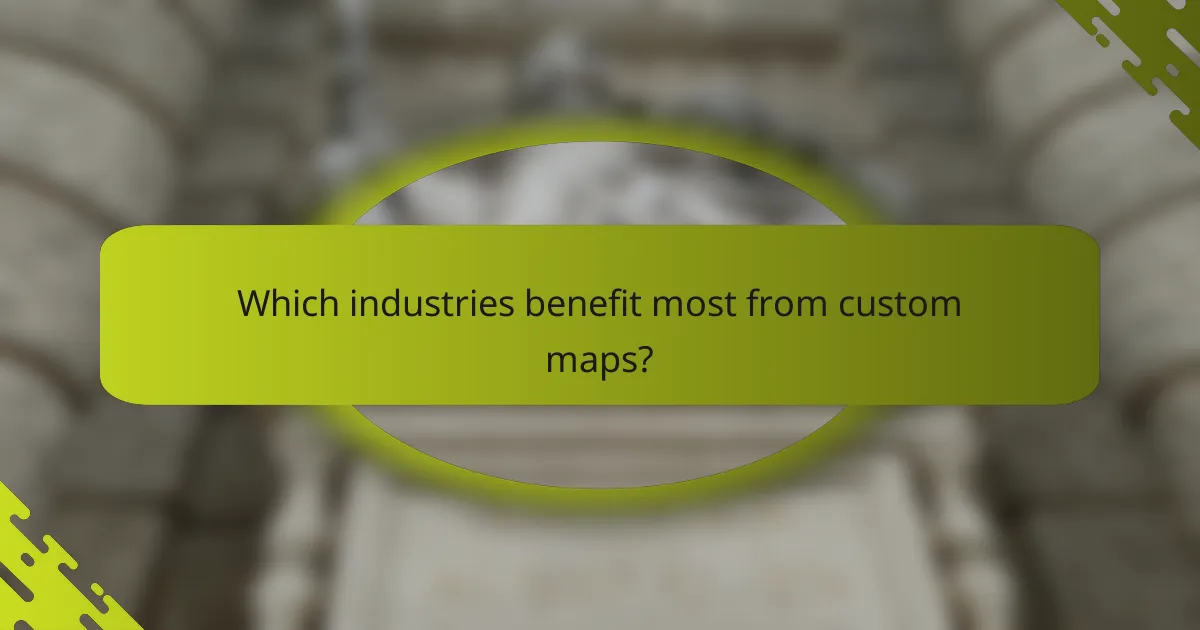
Which industries benefit most from custom maps?
Custom maps are particularly advantageous for industries that rely on location-based services and customer engagement. By providing tailored geographic information, businesses can enhance user experience and improve operational efficiency.
Real estate
In real estate, custom maps help visualize property locations, neighborhood features, and amenities. Agents can create interactive maps that highlight schools, parks, and transportation options, making it easier for potential buyers to assess a property’s value.
Using custom maps can also streamline property searches by allowing clients to filter listings based on specific geographic criteria. This targeted approach can significantly increase engagement and lead conversion rates.
Tourism and hospitality
The tourism and hospitality sectors benefit from custom maps by showcasing attractions, accommodations, and local experiences. Hotels and tour operators can provide guests with personalized maps that highlight nearby points of interest, dining options, and cultural sites.
Custom maps can enhance the visitor experience by integrating user-generated content, such as reviews and photos, making it easier for tourists to navigate unfamiliar areas. This can lead to increased customer satisfaction and repeat visits.
Retail and e-commerce
Retailers can use custom maps to optimize store locations and enhance in-store navigation. By analyzing foot traffic patterns and customer demographics, businesses can strategically position their outlets to maximize visibility and accessibility.
For e-commerce, custom maps can improve delivery logistics by providing accurate geographic data for shipping routes. This can reduce costs and improve delivery times, ultimately enhancing customer satisfaction.
Event planning
Event planners utilize custom maps to coordinate logistics and enhance guest experiences. By mapping out venues, parking areas, and emergency exits, planners can ensure smooth operations during events.
Additionally, custom maps can help attendees navigate large venues or festivals, providing them with information on schedules, vendor locations, and rest areas. This level of detail can significantly improve attendee engagement and overall satisfaction.

What are the key features of effective custom maps?
Effective custom maps incorporate interactive elements, mobile compatibility, branding integration, and data visualization capabilities. These features enhance user engagement and provide valuable insights, making them essential tools for marketing and branding strategies.
Interactive elements
Interactive elements allow users to engage with the map, enhancing their experience and retention of information. Features like clickable markers, zoom functions, and dynamic layers enable users to explore specific areas or data points in detail.
For instance, a retail store might use an interactive map to highlight product locations or promotions, encouraging customers to visit specific sections. Incorporating user feedback options can also foster a sense of community and involvement.
Mobile compatibility
Mobile compatibility ensures that custom maps function seamlessly on smartphones and tablets, catering to the increasing number of users accessing information on the go. A responsive design adapts the layout and features to different screen sizes, maintaining usability.
Consider optimizing loading times to be within a few seconds, as slow maps can lead to user frustration. Testing on various devices and operating systems is crucial to ensure a consistent experience across platforms.
Branding integration
Branding integration involves embedding a company’s identity into the map design, reinforcing brand recognition. This can include using brand colors, logos, and fonts to create a cohesive visual identity that resonates with users.
For example, a tourism board might use a custom map featuring local attractions, complete with the organization’s logo and color scheme, to promote regional tourism. Consistency in branding across all marketing materials enhances credibility and trust.
Data visualization capabilities
Data visualization capabilities allow custom maps to present complex information in an easily digestible format. This can include heat maps, choropleth maps, or point maps that illustrate trends and patterns effectively.
For instance, a real estate company might use a heat map to show property values across different neighborhoods, helping potential buyers make informed decisions. Ensuring that the data is updated regularly can improve the map’s relevance and accuracy.

How to create a custom map for marketing?
Creating a custom map for marketing involves defining your goals and selecting the right tools to visualize your data effectively. A well-designed map can enhance brand recognition and engage your audience by providing valuable geographic insights.
Step 1: Define objectives
Start by clearly outlining the objectives of your custom map. Consider what message you want to convey and how the map will support your marketing strategy. For instance, are you highlighting store locations, customer demographics, or service areas?
Establishing specific goals will guide your design choices and help you determine the data you need to collect. Common objectives include increasing foot traffic, enhancing customer engagement, or showcasing market trends.
Step 2: Choose mapping tools
Selecting the right mapping tools is crucial for creating an effective custom map. There are various software options available, ranging from simple online platforms to advanced GIS (Geographic Information System) applications. Popular tools include Google My Maps, Mapbox, and ArcGIS.
When choosing a tool, consider factors such as ease of use, customization options, and integration capabilities with your existing marketing platforms. Additionally, evaluate whether the tool can handle the scale of your data and if it meets your budget requirements.
